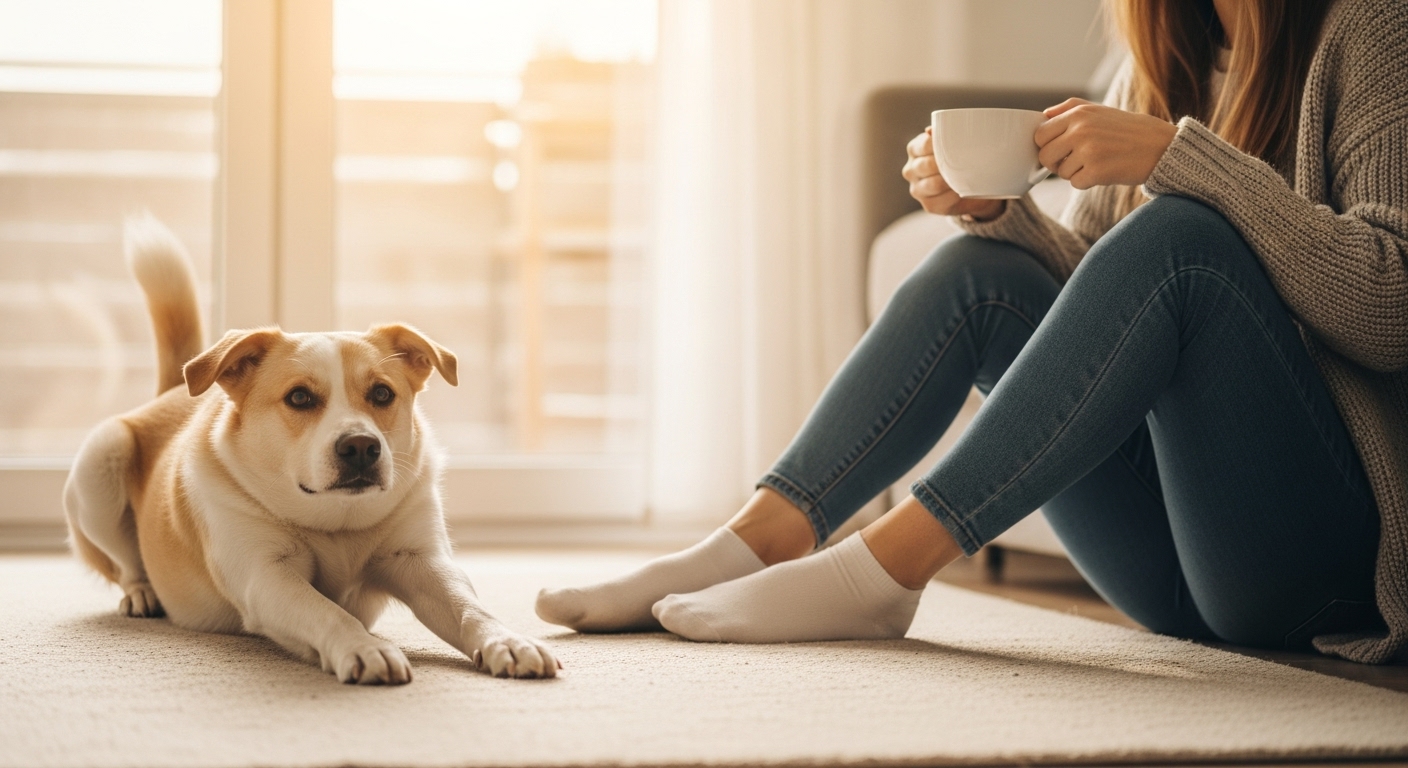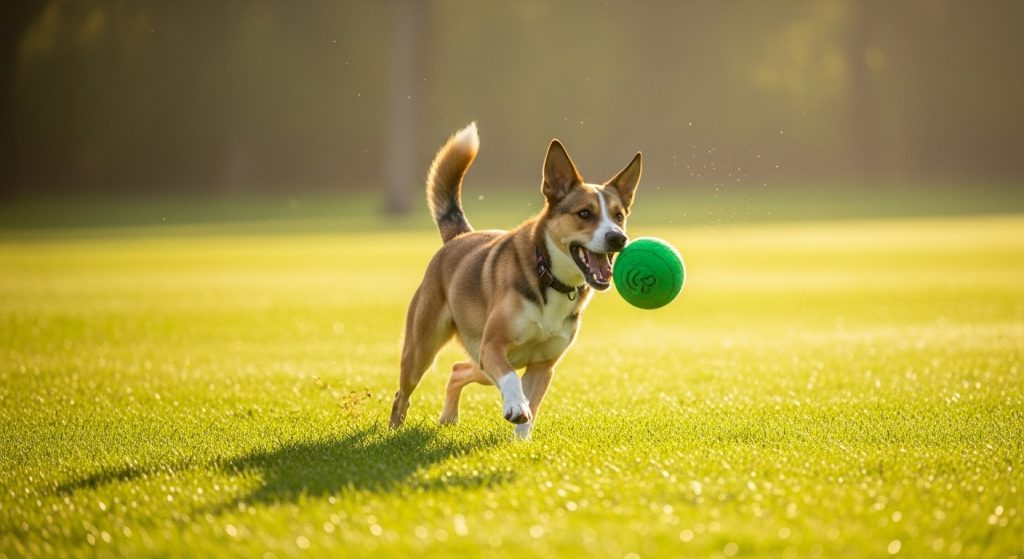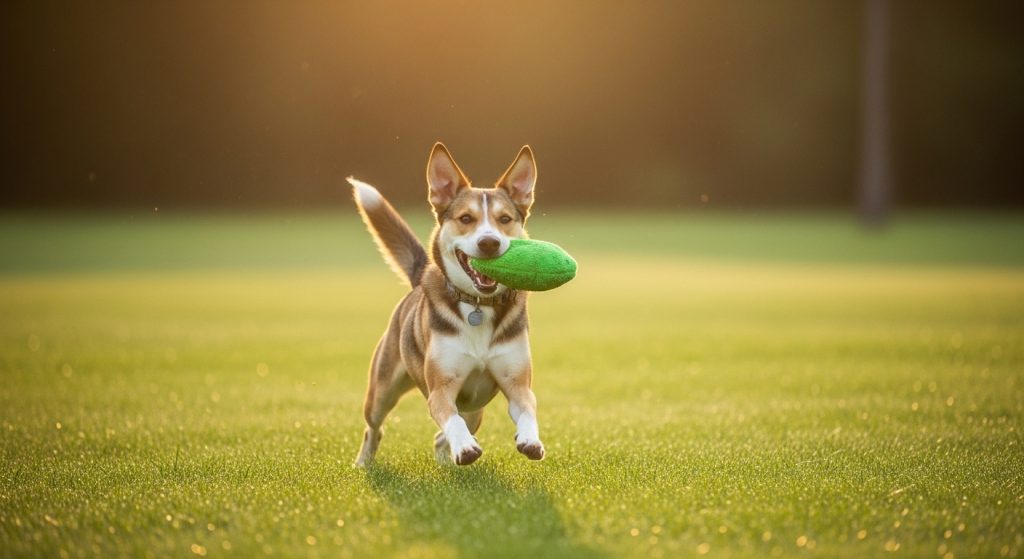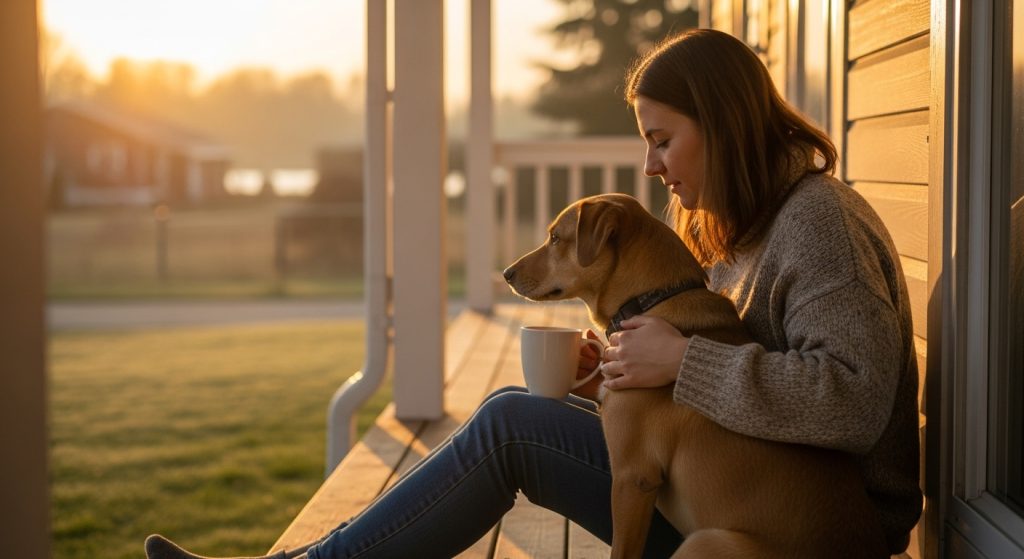Mornings set the tone for your dog’s entire day — especially if you have an active, high-energy pup. Just like humans, dogs thrive on consistency and positive habits. A good morning routine can make the difference between a calm, happy dog and one that’s restless or anxious.
In this guide, you’ll discover how to design the perfect morning routine that balances activity and calmness. From the first stretch of the day to that post-walk nap, these strategies help both you and your furry companion start the day right.
The Science of a Calm Morning for Active Dogs
Before setting up a morning schedule, it helps to understand why routines matter. Dogs are creatures of habit — they feel secure when they know what to expect.
Why Mornings Matter
Mornings are when dogs have the highest energy levels. Overnight rest means they wake up ready to move, explore, and play. Without structure, that energy can turn into barking, chewing, or anxiety.
Establishing a morning pattern helps your dog:
-
Regulate emotions and excitement
-
Build confidence and focus
-
Reduce stress and hyperactivity
A predictable routine creates emotional balance — transforming high energy into happy calmness.
Mental Balance Before Physical Activity
Active dogs need both mental and physical engagement.
Start the day by giving your dog a quick “mental warm-up” — like a training cue refresh (sit, stay, come) or a simple puzzle feeder.
It teaches discipline and focus before playtime, which sets a calm tone for the rest of the day.
Tip: Two minutes of focused training equals fifteen minutes of random running in terms of mental fatigue!
Ideal Morning Timeline (Sample)
Here’s a sample routine you can adjust:
-
6:30 AM: Gentle wake-up & cuddle time
-
6:45 AM: Quick potty break
-
7:00 AM: 10–15 minutes of obedience practice
-
7:15 AM: Brisk walk or jog (20–30 mins)
-
7:45 AM: Calm-down period & breakfast
-
8:00 AM: Short rest before you head to work
Fun Morning Activities That Channel Energy Wisely
Every active dog needs a healthy outlet for their morning energy. But not all exercise is created equal. The goal isn’t just to tire your dog out — it’s to keep them focused, healthy, and emotionally stable.
1. Mix Physical and Mental Challenges
Try alternating between brain games and movement-based exercises.
Here’s how you can rotate activities across the week:
| Day | Activity | Focus |
|---|---|---|
| Monday | Leash training walk | Discipline & control |
| Tuesday | Fetch or frisbee | Cardio burst |
| Wednesday | Hide-and-seek treats | Scent work |
| Thursday | Agility drills in backyard | Coordination |
| Friday | Morning jog | Endurance |
| Saturday | Dog park socialization | Play & social energy |
| Sunday | Slow nature walk | Calm bonding |
This variety keeps your dog’s body fit and their mind sharp.
2. Engage Their Senses
Dogs explore the world through smell. Morning walks are a great opportunity to let them sniff freely (known as “sniffari” walks).
This satisfies curiosity and naturally lowers stress hormones.
Alternate fast-paced walking with slow sniffing zones — it’s like interval training for their brain.
3. Use Enrichment Tools
When mornings are tight, use smart enrichment to occupy your dog:
-
Frozen KONG toys with peanut butter
-
Snuffle mats to find hidden treats
-
Puzzle feeders during breakfast
These not only prevent boredom but also encourage problem-solving — an excellent way to balance energy with calmness.
Remember: Mental stimulation is just as exhausting as running laps.
4. Calm Transitions After Play
After exercise, transition into quiet time — dim lights, soothing music, or gentle petting.
This helps your dog’s heart rate settle and signals that playtime is over.
Dogs learn emotional control through routine — play, calm down, rest, repeat.
Building a Bond Through Morning Rituals
A successful morning routine isn’t only about structure — it’s about connection.
These early hours are the perfect time to strengthen your bond and build trust.
Create Meaningful Moments
Simple acts create deep emotional impact:
-
Speak softly when greeting your dog in the morning
-
Make eye contact during breakfast
-
Add a few minutes of gentle brushing or belly rubs
These reinforce that mornings are safe and loving, not chaotic or rushed.
Dogs mirror your energy — calm mornings with you lead to calm behavior from them.
Nutrition as Part of the Routine
Morning meals are a key part of emotional stability.
Serve food after exercise to mimic a natural hunt-rest-eat cycle.
Use mealtime as an opportunity for enrichment:
-
Use a slow feeder
-
Teach impulse control (“wait” command) before allowing them to eat
-
Praise calmly afterward
Balanced feeding reinforces structure and patience.
Consistency is Everything
Dogs thrive on repetition.
Keep wake-up times, feeding, and walks as consistent as possible — even on weekends.
A stable morning rhythm signals to your dog:
“I’m safe. I know what’s next. I can relax.”
This consistency reduces anxiety and prevents destructive behavior.
Adjust for Age and Breed
Every dog’s needs are different:
-
Puppies: Short bursts of activity + frequent naps
-
Adults: Longer structured walks
-
Seniors: Gentle stretching and slow strolls
High-energy breeds like Border Collies, Huskies, and Retrievers may need extra morning exercise, while smaller breeds may prefer short, frequent routines.
Creating a solid morning routine for active dogs is one of the best gifts you can give your pet. It builds trust, reduces anxiety, and turns chaotic mornings into moments of joy and calm.
Remember — the goal isn’t to exhaust your dog but to balance energy with mindfulness. With structure, love, and patience, your dog will look forward to mornings as much as you do.
So tomorrow, when the alarm goes off and you see that wagging tail — take a deep breath, smile, and start the day together.




